You are using an out of date browser. It may not display this or other websites correctly.
You should upgrade or use an alternative browser.
You should upgrade or use an alternative browser.
Love prismic numbers.......
- Thread starter Brutalfly
- Start date
Harry Pristis
Well-Known Member
For those of us who don't collect insulators, what is a "prismic number"? What distinguishes a "swan neck 2" from another "2"?
Last edited:
The 2 that I posted is a swan neck example.
This is am example of a prismic 2. The prismic writing was from 1895-1901.

The insulator I shared is a transition style from 1893-1895.

The following is more common and non prismic it is called large stamped old style from 1902-1919

Then this is stamped new style from 1920s-1939

*******Note: I did borrow these from:
This is am example of a prismic 2. The prismic writing was from 1895-1901.
The insulator I shared is a transition style from 1893-1895.
The following is more common and non prismic it is called large stamped old style from 1902-1919
Then this is stamped new style from 1920s-1939
*******Note: I did borrow these from:
Hemingray.info - Hemingray Insulator Embossing Styles
Discover more about Hemingray glass insulators! Home of the Hemingray Insulator Database.
www.hemingray.info
Harry Pristis
Well-Known Member
Thanks. It's "prismatic," not "prismic."
Sorry - its a CD 160 "baby signal." A CD 133 has no inner skirt. A nice find though!
The patent date is for the drip points on the bottom that were supposed to help water drain off of the insulator surface faster. Scientific testing has proven it did not work. But it was a good marketing move.
The patent date is for the drip points on the bottom that were supposed to help water drain off of the insulator surface faster. Scientific testing has proven it did not work. But it was a good marketing move.
Thank you for correcting my cd133 to the cd160. I appreciate it. I gotta make sure I rewrite it in my book.Sorry - its a CD 160 "baby signal." A CD 133 has no inner skirt. A nice find though!
The patent date is for the drip points on the bottom that were supposed to help water drain off of the insulator surface faster. Scientific testing has proven it did not work. But it was a good marketing move.
It is funny how those marketing things work isn't it with the drip points.
I am currently in the process of writing my second book about the main insulator maker during this time period: Brookfield Glass Company. Before online sources started archiving articles etc., It was generally thought Hemingray was the leader in insulator production throughout the ages. I have contemporary sources during the period drip points were invented that say Brookfield had a monopoly in the insulator market. Hemingray was upcoming, but had to do something to try to take more of the Brookfield market away. Drip points and eye candy colors (marketed to ID a company's specific line on the pole - aiding company repairmen) were the H.G.Co. marketing department answers.
I believe yours is also known as a Transition mold. It started as a smooth based insulator and had the patent date later engraved onto it to make a dripped insulator.
Though the article is about CD162s (just larger sized signals of same profile), it describes the types of embossings and gives history form that time period. It also shows various 2s known on the 162s.
I believe yours is also known as a Transition mold. It started as a smooth based insulator and had the patent date later engraved onto it to make a dripped insulator.
Though the article is about CD162s (just larger sized signals of same profile), it describes the types of embossings and gives history form that time period. It also shows various 2s known on the 162s.
That is some great material to read. I have skimmed some of it but will have to sit down tomorrow and read more of it. Thank you for posting that information. My dad and I collect insulators together and we learn something new everyday and we have been at it for a while. He works at an electric coop and has been for almost 30 years so it is pretty neat It will definitely give us some more to talk about.
insulators.info
NIA.org
The two largest and most comprehensive insulator sites on the web.
The former has a show calendar with the National this year in Gettysburg, PA.
On the NIA website you can find a color picture of each known CD under the insulator identification gallery and then choosing US, foreign and glass or porcelain.
Unlike bottles, there are a limited number of insulators out there so they are al cataloged in a Price Guide. But the number available is still so large no one had ever completed one of each profile (CD number) let alone color!
Here are some pics of my indoor displays. I have another cabinet not shown, too many boxes full in storage (~1000) and two outdoor display poles.
Note some of the closeups and some in the backlit case are the same as in the main window pic. I just took the pics at different times.
NIA.org
The two largest and most comprehensive insulator sites on the web.
The former has a show calendar with the National this year in Gettysburg, PA.
On the NIA website you can find a color picture of each known CD under the insulator identification gallery and then choosing US, foreign and glass or porcelain.
Unlike bottles, there are a limited number of insulators out there so they are al cataloged in a Price Guide. But the number available is still so large no one had ever completed one of each profile (CD number) let alone color!
Here are some pics of my indoor displays. I have another cabinet not shown, too many boxes full in storage (~1000) and two outdoor display poles.
Note some of the closeups and some in the backlit case are the same as in the main window pic. I just took the pics at different times.
Attachments
-
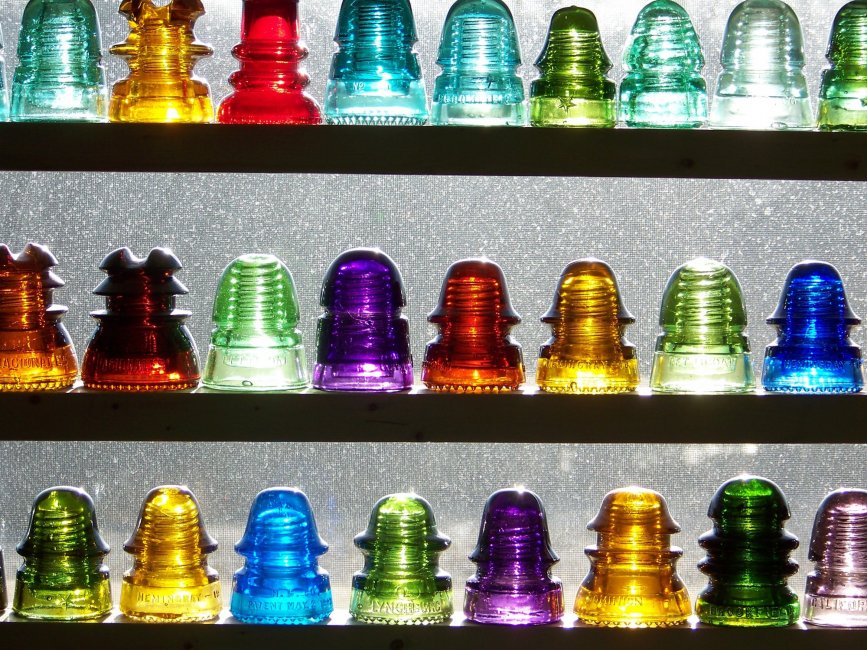 3-28-9_My_Window_1.JPG890.6 KB · Views: 95
3-28-9_My_Window_1.JPG890.6 KB · Views: 95 -
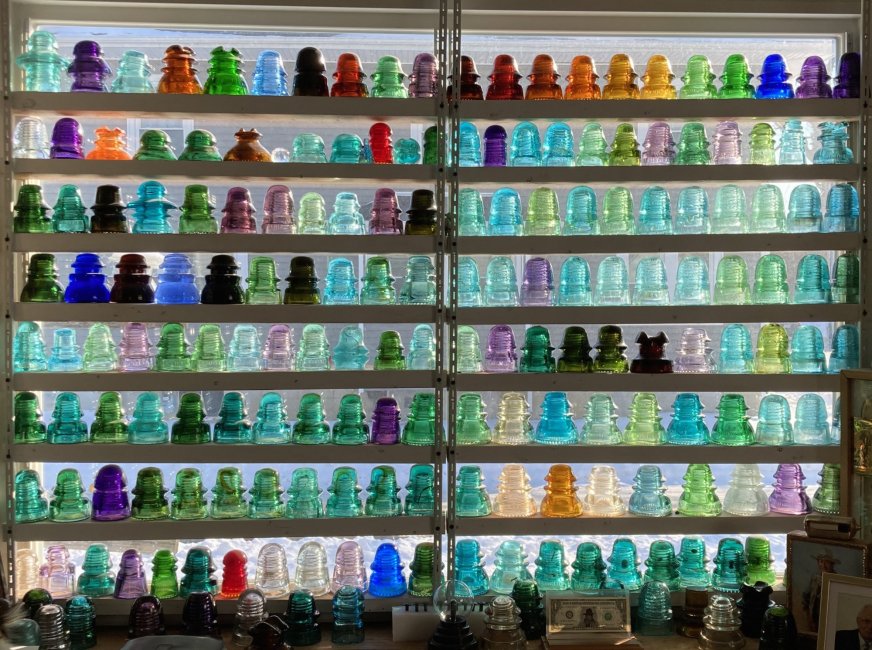 43311_InsulatorWindow_Display.jpg648.2 KB · Views: 93
43311_InsulatorWindow_Display.jpg648.2 KB · Views: 93 -
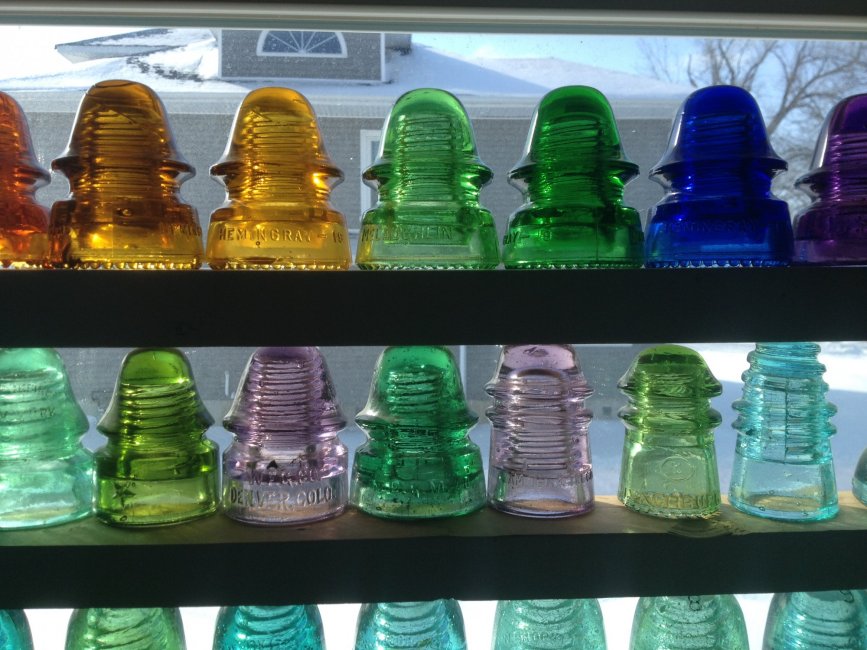 43311_Window_Display_8.jpg514.2 KB · Views: 96
43311_Window_Display_8.jpg514.2 KB · Views: 96 -
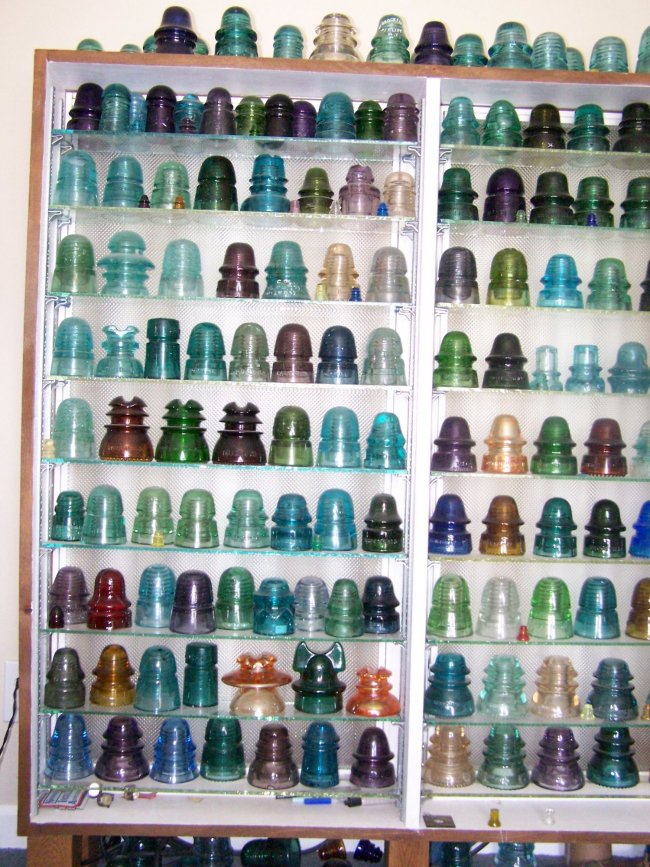 case Left.JPG633 KB · Views: 98
case Left.JPG633 KB · Views: 98 -
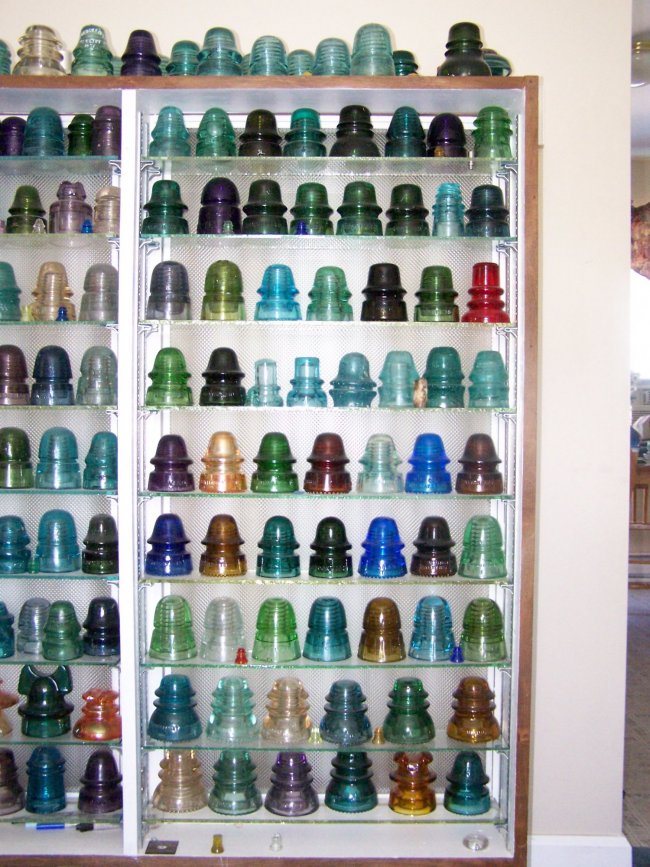 case Right.JPG589.3 KB · Views: 95
case Right.JPG589.3 KB · Views: 95 -
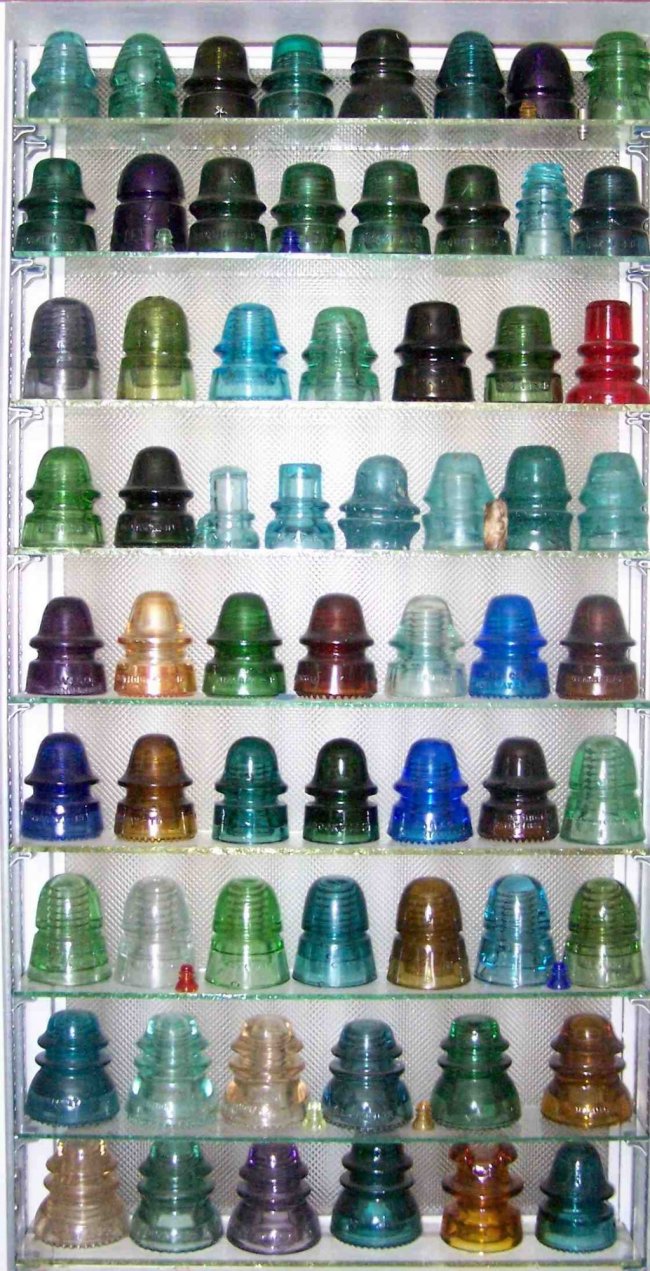 CaserightOPT195.jpg439.3 KB · Views: 88
CaserightOPT195.jpg439.3 KB · Views: 88 -
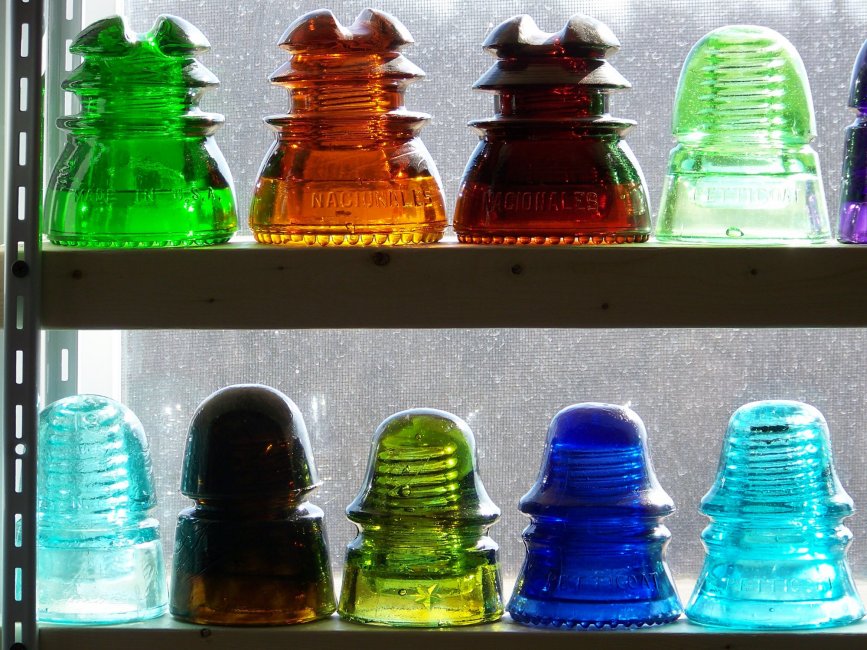 Mine_InsulatorsWindow3-910.JPG687.6 KB · Views: 94
Mine_InsulatorsWindow3-910.JPG687.6 KB · Views: 94 -
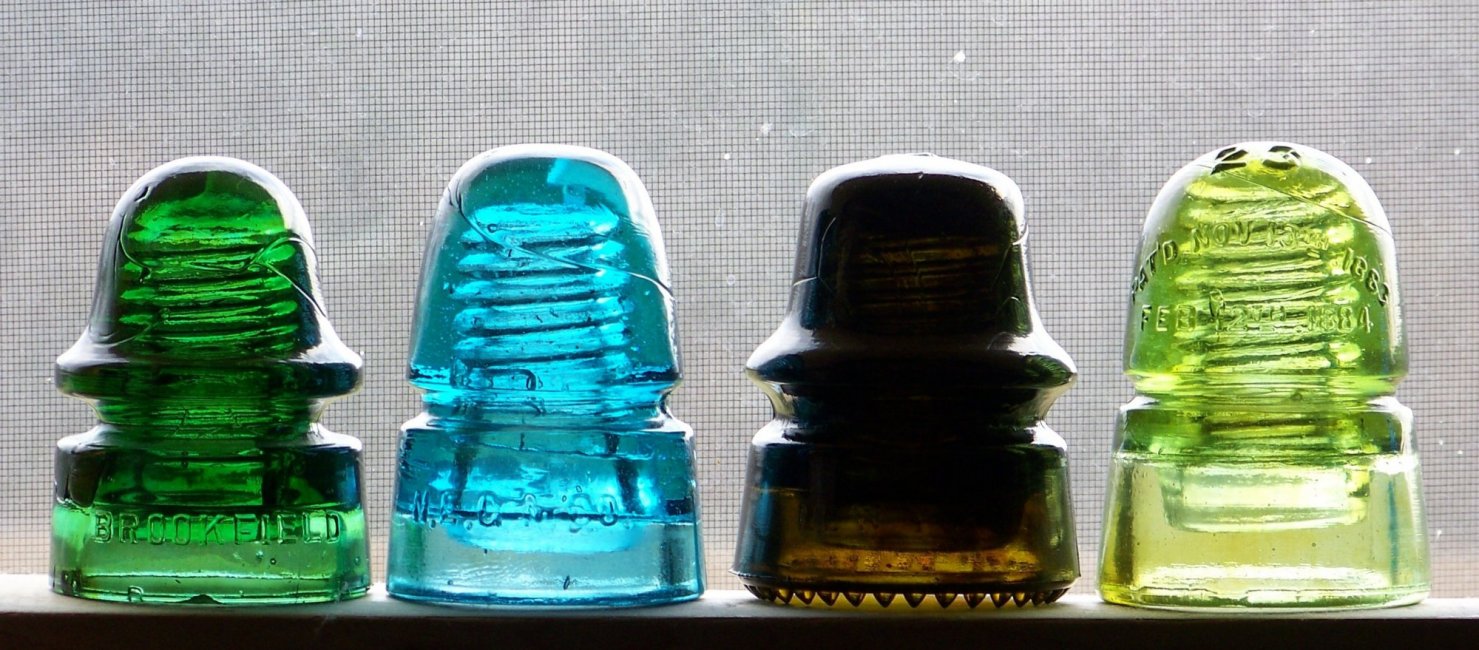 My_Insulator_Coloful_window_Display.jpg417.2 KB · Views: 104
My_Insulator_Coloful_window_Display.jpg417.2 KB · Views: 104 -
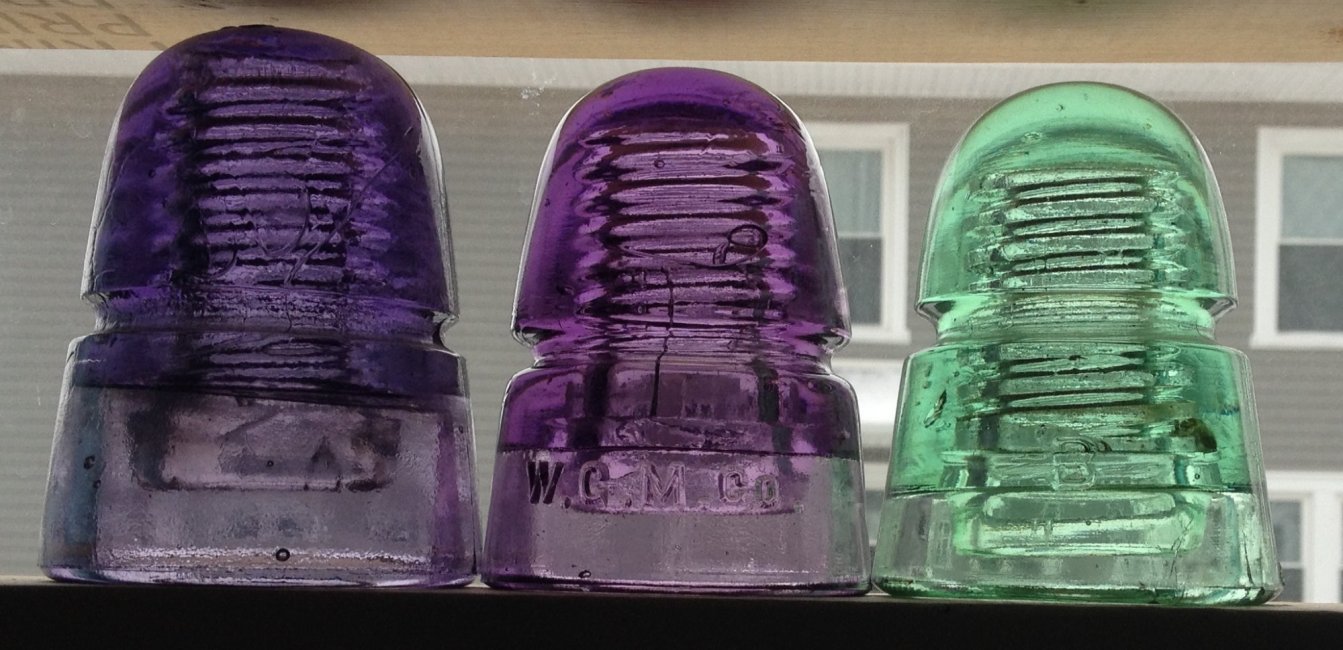 WGM_Beehive_Comp_2.jpg345.6 KB · Views: 91
WGM_Beehive_Comp_2.jpg345.6 KB · Views: 91
Similar threads
- Replies
- 1
- Views
- 847
- Replies
- 6
- Views
- 810
- Replies
- 1
- Views
- 414
Latest posts
-
Rare Utah can added to my collection!
- Latest: timeandabottle
-
-
-
Looking for info; embossed BUBBLES; no other markings.
- Latest: Step Back In Time
-
Latest threads
-
-
Looking for info; embossed BUBBLES; no other markings.
- Started by MSZ
- Replies: 6
-
-
C.1870 Utah drugstore with a snake on pestle
- Started by timeandabottle
- Replies: 0
-
Rare Utah can added to my collection!
- Started by timeandabottle
- Replies: 2
-
